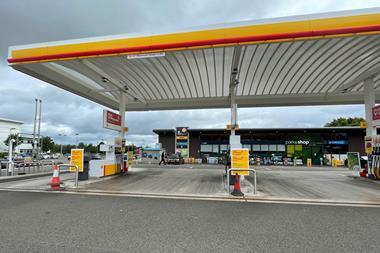After one of the most volatile quarters on record for fuel prices, International Petroleum Week in the middle of last month was perfectly timed to bring some clarity to the turmoil, and give dealers some guidance on what may happen to prices in the months ahead.
One of the most authoritative events during International Petroleum Week was Argus Media’s twin conferences the Crude forum followed by the Products Forum with its experts giving an overview of what’s happening in markets worldwide, and analysing how that will influence the price of the fuel you are buying.
Starting with the present, Chris Judge, Argus Media’s vice president business development, Europe and Africa, says the reason prices are so low is simply "too much oil".
He explains: "The overwhelming fundamental is global crude oil oversupply, caused primarily by increasing US production from shale (fracking). This has brought an extra one million barrels a day to the market for three consecutive years from 2012-2014. Meanwhile demand has not risen nearly as fast with the biggest single factor being Chinese economic growth slowing down."
Higher prices
Usually when faced with oversupply like this, Opec has reacted like a classic cartel and has cut its output to maintain higher prices. But this hasn’t happened this time. Judge says: "Saudi Arabia in particular (by far the most important supplier) has decided that it will not cut supply and will take the pain of lower prices to ensure it keeps its market share. This is also keeping the US, a big Saudi ally, happy and damaging the Russian economy, which is also good for the US."
So the scene was set for the price of oil to fall but it was the speed of the decline and the depth it reached that took many by surprise. Judge says: "The sellers really came out in force after Opec’s last meeting when it decided not to cut output. As with stock market crashes, they can be overdone and the market appears to have stabilised at around $60 per barrel after falling briefly below $50 per barrel, which in hindsight was unrealistically low."
But with prices changing so fast, what dealers want to know is what are the prospects for the months ahead. If anyone is likely to have a steer on where the market is heading, it would be the Shell boss Ben van Beurden, so there was great interest as he delivered one of International Petroleum Week’s keynote speeches at the Energy Institute’s Annual Dinner.
In the lead up to the event, some national press reports claimed the CEO of Royal Dutch Shell would predict prices would remain at a six-year low for the rest of the year, but in fact he was much less clear cut.
He conceded that the market in 2015 would remain volatile because of the current stance of Opec, and suggested a range of future scenarios and how prices would react if they occurred.
He said: "What will happen in 2015? I can’t predict the future, but oil demand is clearly linked to economic growth. Compared to last year, the International Monetary Fund expects the global economy to grow. So, global oil demand is expected to grow as well.
"But seeing today’s prices, supply will probably not keep pace with this growth. It may even decline, as prices are close to cash costs, according to consultants like Wood Mackenzie. As a result, energy companies could shut down some of their existing production.
"If the brighter economic outlook becomes reality, the market could tighten, and this would support higher prices. But two questions remain. First: How far and how long will prices fall? Second: How quickly can prices recover?
"A rapid recovery could occur if projects are postponed or even cancelled. This would lead to less new supply not so much now, but in two or three years. Combined with economic growth, the market could tighten quickly in this scenario.
"But what if the largest supply growth engine, US shale oil, proves to be resilient in the face of falling prices and the markets remain well-supplied? In that case, with moderate economic growth, prices could stay low for longer.
"Either way: the market will remain volatile in 2015, if only because for now Opec shows no sign of wanting to resume its role as swing supplier. But for the longer term, I see no change to fundamental drivers of oil markets such as rising demand and the need for new supplies."
Looking to the longer term he predicted demand for oil would continue to grow and oil prices would need to reflect the investment needed to meet that demand.
Van Beurden continued: "Production from oil fields typically declines at a rate of at least 5% a year. This means that the need for new supply could be as high as five million barrels a day, year after year, until at least 2030.
"This amount of supply cannot be delivered by Opec or shale oil producers in the US alone. It will need to come from new and challenging areas, and has to be supported by an oil price that justifies huge investments."
Chris Judge suggests there will be a gradual recovery in prices, but certainly won’t be drawn on predicting where prices might be in six months or a year’s time. He says: "It will take some time for the market to return to balance and most pundits expect low prices for at least two to three years. The shale production will slow down as prices are now lower than it costs to produce the oil in many cases although costs vary massively. Needless to say, this could all change if it kicks off in the Middle East and big producers like Saudi Arabia are affected. It will also depend on the global economy, which should in theory benefit from cheaper energy costs."
He adds: "We do not expect a rapid return to $100 a barrel or even close to that for some while. It would be dangerous to draw parallels from the last price crash in 2008, when prices dipped to $40 a barrel only to return pretty quickly back up to $80 a barrel. That crash was caused by global recession and was tied up with the financial crisis it was demand led. This is supply-led and any slowdown in supply will take time. Prices will recover, but unless there are massive geopolitical events, the rise should be slow and steady."
On the forecourts Judge also foresees the growth of diesel faltering. He says: "We expect the switch to diesel to slow down and possibly reverse. Diesel is still short in Europe and domestic motorists appear to get little benefit from diesel cars unless their mileage is more than 15,000 miles a year."
In addition, until recently the government had encouraged take-up of diesel cars because they were believed to be less harmful to the environment, but some politicians such as London mayor Boris Johnson are now strongly challenging that theory and seeking to penalise drivers of diesel cars.
So International Petroleum Week has highlighted the major issues facing the sector but only time will tell where prices are heading and how the sales mix will evolve.
Some respite for REFINERies
The decision by Total to halve capacity at its Lindsey refinery has again focused attention on the UK’s faltering refineries.
Total’s move follows last year’s shutdown of the Murco refinery at Milford Haven (pictured below), and the Grangemouth refinery in Scotland being taken to the brink of closure after an industrial dispute.
But Chris Judge, Argus Media’s vice president business development, Europe and Africa, emphasises that the recent cheaper crude oil prices will have actually helped the refinery sector, and were unlikely to have influenced Total’s decision.
He says: "It is crude oil, the raw feedstock for refiners, rather than products that are oversupplied. The European refining sector remains in crisis because of stiff competition from the US, Asia and the FSU (former Soviet Union).
"But the UK sector has already seen brutal rationalisation and should fare better than other European countries. No UK refinery could consider itself bullet proof, but any further losses would leave the UK market over-reliant on imports, and refining margins have seen strong benefits from cheaper crude oil prices."
Total chief executive Patrick Pouyanne said Total had studied several options for Lindsey in recent years, including a sale, and was now embarking on an "adaptation plan" to improve efficiency and competitiveness at the plant. Lindsey currently has a capacity of 207,000 barrels a day.
Pouyanne added: "We think we can keep this refinery as part of the Total group. Workers there showed they were willing to fight to make it profitable."
The company’s plan, which involves a £33m investment, will cut refining capacity by 50%, by shutting down one of the crude distillation units and associated operations.
Total will also reorganise the refinery’s support and operational services, with a further £150m to be invested over the next five years for turnaround maintenance and other improvements, the company said.





























No comments yet